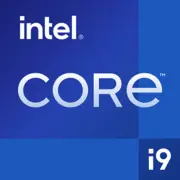Intel Core i9-14900T

The Intel Core i9 14900T processor is a powerhouse for desktop users, boasting an impressive 24 total cores and 32 total threads. The Code Name "Raptor Lake" and Intel 7 technology showcase the processor's advancement in performance and efficiency. The integrated Intel UHD Graphics 770 also provides solid visual capabilities for everyday use and light gaming.
One of the standout features of the Core i9 14900T is its ability to handle heavy workloads with ease. Whether it's demanding creative tasks like video editing and 3D rendering or intensive computational work, this processor delivers exceptional speed and responsiveness. Its multi-threading capability ensures that complex applications run smoothly and efficiently.
Additionally, the processor's power efficiency is commendable, making it a great choice for users looking to build a high-performance, low-power consumption system. The Core i9 14900T excels in handling multitasking and is well-suited for professionals and enthusiasts who demand uncompromising performance from their desktop setup.
Overall, the Intel Core i9 14900T processor offers a compelling combination of power, efficiency, and versatility, making it an excellent choice for users seeking top-tier desktop performance.
Basic
Label Name
Intel
Platform
Desktop
Launch Date
January 2024
Model Name
?
The Intel processor number is just one of several factors - along with processor brand, system configurations, and system-level benchmarks - to be considered when choosing the right processor for your computing needs.
i9-14900T
Code Name
Raptor Lake
CPU Specifications
Total Cores
?
Cores is a hardware term that describes the number of independent central processing units in a single computing component (die or chip).
24
Total Threads
?
Where applicable, Intel® Hyper-Threading Technology is only available on Performance-cores.
32
Performance-cores
8
Efficient-cores
16
Max Turbo Frequency
?
Max Turbo Frequency is the maximum single-core frequency at which the processor is capable of operating using Intel® Turbo Boost Technology and, if present, Intel® Turbo Boost Max Technology 3.0 and Intel® Thermal Velocity Boost. Frequency is typically measured in gigahertz (GHz), or billion cycles per second.
5.5 GHz
L3 Cache
36 MB
CPU Socket
?
The socket is the component that provides the mechanical and electrical connections between the processor and motherboard.
FCLGA1700
Technology
?
Lithography refers to the semiconductor technology used to manufacture an integrated circuit, and is reported in nanometer (nm), indicative of the size of features built on the semiconductor.
Intel 7
TDP
35 W
Processor Base Power
?
The time-averaged power dissipation that the processor is validated to not exceed during manufacturing while executing an Intel-specified high complexity workload at Base Frequency and at the junction temperature as specified in the Datasheet for the SKU segment and configuration.
35 W
Maximum Turbo Power
?
The maximum sustained (>1s) power dissipation of the processor as limited by current and/or temperature controls. Instantaneous power may exceed Maximum Turbo Power for short durations (<=10ms). Note: Maximum Turbo Power is configurable by system vendor and can be system specific.
106 W
Max. Operating Temperature
?
Junction Temperature is the maximum temperature allowed at the processor die.
100°C
PCI Express Version
?
PCI Express Revision is the supported version of the PCI Express standard. Peripheral Component Interconnect Express (or PCIe) is a high-speed serial computer expansion bus standard for attaching hardware devices to a computer. The different PCI Express versions support different data rates.
5.0 and 4.0
Memory Specifications
Memory Type
?
Intel® processors come in four different types: Single Channel, Dual Channel, Triple Channel, and Flex Mode. Maximum supported memory speed may be lower when populating multiple DIMMs per channel on products that support multiple memory channels.
Up to DDR5 5600 MT/s Up to DDR4 3200 MT/s
Max Memory Size
?
Max memory size refers to the maximum memory capacity supported by the processor.
192 GB
Memory Channels
?
The number of memory channels refers to the bandwidth operation for real world application.
2
GPU Specifications
Integrated Graphics Model
?
An integrated GPU refers to the graphics core that is integrated into the CPU processor. Leveraging the processor's powerful computational capabilities and intelligent power efficiency management, it delivers outstanding graphics performance and a smooth application experience at a lower power consumption.
Intel® UHD Graphics 770
Graphics Frequency
?
Graphics max dynamic frequency refers to the maximum opportunistic graphics render clock frequency (in MHz) that can be supported using Intel® HD Graphics with Dynamic Frequency feature.
1.65 GHz
Benchmarks
Geekbench 6
Single Core
Score
3019
Geekbench 6
Multi Core
Score
16385
Passmark CPU
Single Core
Score
4412
Passmark CPU
Multi Core
Score
43527
Compared to Other CPU
Geekbench 6 Single Core
Geekbench 6 Multi Core
Passmark CPU Single Core
Passmark CPU Multi Core
Share in social media
Or Link To Us
<a href="https://cputronic.com/en/cpu/intel-core-i9-14900t" target="_blank">Intel Core i9-14900T</a>